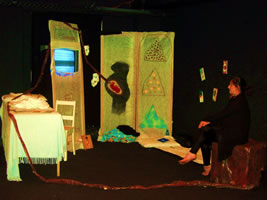Lecture Activities

Lectures
While it may seem like lectures only require you to sit and listen, let me assure you that they also involve activity. Here’s some information you minght find useful to remember:
Some handy reminders to help make lectures beneficial for you and everyone else:
- You are expected to attend ALL lectures that are offered in the unit.
- If, for some unforeseen reason you cannot attend a lecture, you MUST advise your lecturer and ensure you access notes from the lecture.
- If lecture notes are NOT available on the web or from your lecturer, make sure you ask someone to collect any handouts and/or take notes on your behalf.
- The information provided in a drama lecture is ESSENTIAL for you to access and understand because:
- Lectures provide you with knowledge and important resources for studying and/or performing particular texts.
- Lectures outline important information that you will need to complete assessment items and exams.
- Remember: If you are tempted to enter into deep discussions or to gossip with friends during lectures- Don’t ! All students pay dearly for a university education so respect everyone’s investment by keeping conversations outside class and enabling everyone to hear information being provided while in class.
Activities that will enhance your learning and enjoyment of lectures:
a) While attending lectures is important, listening and taking notes during lectures are primary activities during these sessions.
b) With these tasks in mind, be sure to come prepared with whatever you need to record the information provided in a lecture (or any questions you wish to raise in a tutorial). Eg. paper and pens or, if your lecturer gives you formal permission to record lectures, a cassette recorder.
c) You are welcome to ask brief questions about the lecture material being introduced, but involved or complicated questions are best reserved for tutorials when your lecturer or tutor will be able to give you and your question more consideration.
d) As a university student, you are expected to be actively involved in your learning and you will get the most out of your learning if you prepare for lectures. Here are some suggested preparatory activities that will enhance your learning and understanding of the material outlined in lectures:
- Read your unit outline and identify the subject or plays you will be covering during each week’s lecture
- Read set plays, particularly those that are set for the week of your lecture
- Read any related texts that your lecturer has mentioned in class or outlined in selected bibliographies for your benefit
- Log on to the web and search for sites you can read that are related to the plays and playwrights you will be covering.
- Look up other university sites on the web and compare what other students may be studying in similar courses
- Go to the library and search the catalogue, databases or web to find texts to read that offer information about the play or the playwright who wrote the play, or the period of time when the play was written
- You might also find and read other plays by the same playwrights, or plays that were written in the same period of history by different playwrights, or even plays that were written in the same country during a different period of history
- Since plays are also a form of literature, you might also like to review the other forms of literature produced during similar periods and consider the similarities and differences between different mediums.
- You can also go to the theatre and listen to people’s comments and compare them to your own responses. Consider what elements seemed to work and what didn’t seem to work during performances of plays and ask yourself: ‘why?’.
|
|

